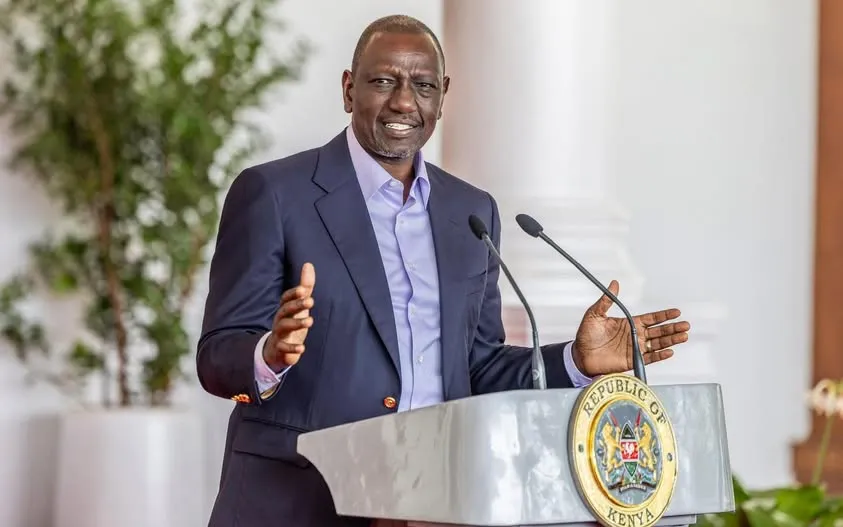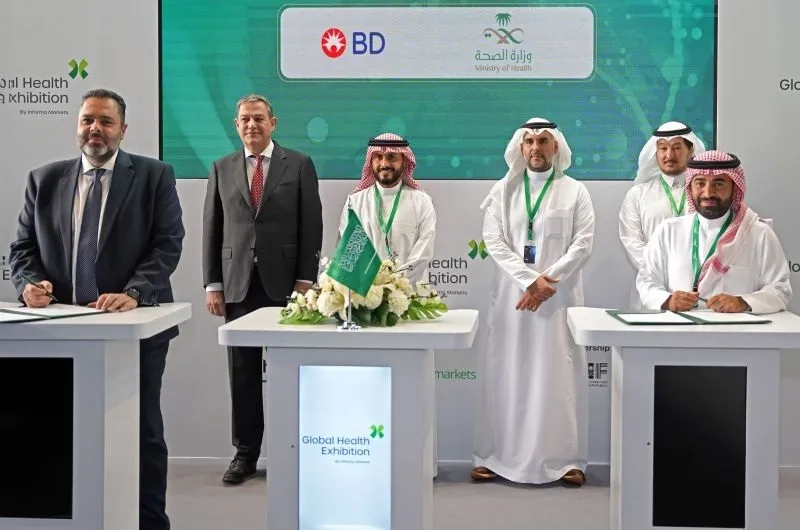Kenya is poised to establish a transformative national infrastructure fund designed to finance major development projects including roads, dams, and power generation facilities, in a strategic pivot that will substantially reduce the country’s reliance on external borrowing while ensuring sustainable, locally-financed development that addresses critical infrastructure gaps constraining economic growth. This landmark initiative, announced by President William Ruto during a church service in Meru County, represents a fundamental shift in how Kenya approaches infrastructure financing and signals the administration’s recognition that traditional funding models have proven inadequate for the nation’s ambitious development agenda.
Push boundaries, reach goals, achieve more. Whether it’s ACCA, HESI A2, ATI TEAS 7, HESI EXIT, NCLEX-RN, NCLEX-PN, or Financial Literacy, we’ve got the Online course to match your ambition. Start with Serrari Ed now.
According to President Ruto, the proposed infrastructure fund will help the government systematically tackle persistent funding gaps that have stalled numerous critical development projects across multiple sectors, leaving partially completed roads, unfinished water systems, and delayed power generation facilities that represent wasted resources and unfulfilled promises to citizens. The President candidly acknowledged that raising sufficient funds for major infrastructure projects through conventional mechanisms—primarily external borrowing from multilateral development banks, bilateral creditors, and commercial bond markets—has become increasingly difficult as Kenya’s debt burden has grown and as global financial conditions have tightened with rising interest rates.
This funding challenge has prompted the Ruto administration to explore innovative local financing mechanisms that can mobilize domestic capital for infrastructure investment, reducing vulnerability to external creditors, currency fluctuations, and the conditionalities that often accompany international lending. By establishing a dedicated infrastructure fund capitalized through domestic resources, Kenya aims to achieve greater control over its development trajectory while building institutional capacity for long-term infrastructure planning and implementation.
Presidential Vision: Breaking the Cycle of Incomplete Projects
“For long, we have been building roads which end up stalling due to lack of funds. For Kenya to grow, we must do things differently,” President Ruto declared during the church service at St. Mary’s AIPCA Church in Kathelwa, Igembe Central, Meru County, on Sunday, October 5, 2025. This frank acknowledgment of past implementation failures resonates with widespread public frustration over the thousands of incomplete infrastructure projects scattered across Kenya—roads ending abruptly in remote areas, half-built bridges abandoned for years, irrigation schemes never completed, and school buildings left as empty shells.
These stalled projects represent not merely administrative inefficiency but profound waste of scarce public resources and broken commitments to communities that reorganized land, displaced residents, or adjusted economic activities in anticipation of infrastructure that never materialized. The phenomenon of incomplete projects has multiple causes including inadequate initial budgeting, cost escalation during implementation, competing budgetary priorities triggering mid-project funding diversions, contractor failures, and the stop-start nature of infrastructure funding when governments rely on annual budget appropriations subject to revenue volatility and political pressures.
The President emphasized that he is actively engaging Members of Parliament to build legislative support for creating the infrastructure fund, recognizing that establishing such a fund will require statutory authorization, appropriation of initial capitalization, and ongoing oversight frameworks ensuring transparent, accountable fund management. Parliamentary engagement also helps build political consensus essential for the fund’s long-term sustainability beyond the current administration, as infrastructure financing mechanisms must transcend individual political cycles to achieve their full potential.
Ambitious Scope: From Stalled Projects to Power Generation Expansion
The proposed national infrastructure fund, according to President Ruto’s remarks, will enable the government to pursue multiple strategic objectives simultaneously. Completing stalled projects represents perhaps the most immediate priority, as finishing partially constructed infrastructure generates economic returns faster than initiating entirely new projects requiring years from conception to completion. By systematically identifying and prioritizing incomplete projects with the highest economic and social returns, the fund could rapidly enhance infrastructure service delivery while demonstrating government competence and follow-through.
Initiating new infrastructure projects addresses emerging needs and expands coverage to underserved regions, ensuring that infrastructure development keeps pace with population growth, urbanization, and evolving economic activities. New project selection should employ rigorous cost-benefit analysis, environmental and social impact assessment, and alignment with national development strategies including the Kenya Vision 2030 long-term development blueprint and the administration’s Bottom-Up Economic Transformation Agenda emphasizing grassroots economic empowerment.
Expanding power generation capacity to 10,000 megawatts represents a particularly ambitious component of the infrastructure fund’s mandate. Kenya’s current installed electricity generation capacity stands at approximately 3,000 megawatts, meaning the stated target requires more than tripling existing capacity—an enormous undertaking requiring massive investment across generation, transmission, and distribution infrastructure. Achieving 10,000 megawatts would transform Kenya into a regional energy surplus nation capable of exporting electricity to neighboring countries while supporting energy-intensive industrialization and universal electricity access domestically.
This power generation expansion vision aligns with Kenya’s substantial renewable energy potential including geothermal resources in the Rift Valley, wind power along the northern corridor and coastal regions, solar energy throughout the country’s sunny geography, and hydropower from rivers and planned dam projects. However, realizing this potential requires overcoming financing challenges that have historically constrained Kenya’s energy sector development despite favorable resource endowments.
Regional Infrastructure Needs: The Meru County Case Study
President Ruto illustrated Kenya’s infrastructure financing challenge through specific reference to Meru County’s water infrastructure needs, highlighting that the county requires approximately Sh40 billion for water projects—an amount equal to the entire national allocation for water infrastructure across all 47 counties. This dramatic disparity between needs and available resources underscores the massive infrastructure deficit Kenya faces and the inadequacy of current financing levels for addressing accumulated backlogs while meeting growing demand.
“In Meru alone, we need about Sh40 billion for water projects, yet the entire country has secured only the same amount. We have done a lot to lay the foundation in the last two years, but we must up our game. I have told MPs that Kenya should not be at the level of a third-world country,” the President stated, connecting infrastructure development directly to national dignity and international standing.
This framing positions infrastructure investment not merely as technical economic enabler but as essential to Kenya’s self-image and global positioning. The reference to avoiding “third-world country” status reflects sensitivity to how infrastructure quality—or lack thereof—shapes international perceptions, influences investor confidence, and affects citizens’ pride in their nation. Modern, functional infrastructure systems signal governmental competence, economic dynamism, and development progress, while infrastructure deficits suggest administrative failure and economic stagnation.
The Meru County announcements also included several specific infrastructure commitments demonstrating how the proposed national infrastructure fund would translate into tangible local improvements. The elevation of Meru town to city status—making it Kenya’s sixth city alongside Nairobi, Mombasa, Kisumu, Nakuru, and Eldoret—carries both symbolic significance and practical implications for urban governance, planning capacity, and resource allocation.
Build the future you deserve. Get started with our top-tier Online courses: ACCA, HESI A2, ATI TEAS 7, HESI EXIT, NCLEX-RN, NCLEX-PN, and Financial Literacy. Let Serrari Ed guide your path to success. Enroll today.
Addressing Safety Hazards: The Nithi Bridge Reconstruction
A particularly noteworthy infrastructure commitment involves the allocation of Sh7 billion to redesign and reconstruct the notorious Nithi Bridge, which has been a deadly safety hazard for nearly two decades. Located along the Meru-Nairobi highway, the Nithi Bridge features extremely sharp corners requiring vehicles to slow dramatically on what is otherwise a major transport corridor, creating conditions for frequent accidents that have claimed numerous lives over the years.
“We want to straighten the Nithi Bridge so that it stops being a trap where citizens lose their lives and experience many accidents,” President Ruto explained, acknowledging the bridge’s grim reputation and committing to comprehensive reconstruction rather than incremental improvements. The Sh7 billion allocation reflects the substantial engineering challenges involved in straightening the approach roads, reconstructing the bridge structure itself, and potentially rerouting sections of highway through difficult terrain.
This commitment illustrates how the national infrastructure fund could address long-neglected safety hazards that persist not due to lack of awareness—the Nithi Bridge’s dangers are well-documented and widely known—but due to funding constraints preventing the major reconstruction required for permanent solutions. By prioritizing high-impact safety improvements, the infrastructure fund can generate immediate, visible benefits while building public confidence in the government’s development agenda.
Road Infrastructure Investment and County Development
President Ruto further revealed that Sh2 billion has been allocated for construction and rehabilitation of roads throughout Meru County, with assurances that projects will now proceed after delays caused by economic slowdown and inflation pressures experienced during 2022. That year saw global commodity price spikes, currency depreciation, and supply chain disruptions that substantially increased construction costs while constraining government revenues, forcing postponement of many planned infrastructure projects.
“Now we have a funded plan for roads over the next two years. This will ensure our roads are safe,” the President stated, connecting road infrastructure directly to safety outcomes. Poor road conditions contribute significantly to Kenya’s high traffic accident rates through mechanisms including vehicles swerving to avoid potholes and encountering oncoming traffic, excessive speed on unpredictable surfaces causing loss of control, and structural failures like collapsed culverts or washed-out sections creating sudden hazards.
To support Meru town’s transition to city status, the national government, in collaboration with the World Bank, has allocated Sh5 billion for a 10-kilometer road and bypass network designed to improve urban mobility, reduce congestion, and accommodate anticipated traffic growth as the city develops. Urban bypass roads are particularly valuable infrastructure investments, enabling through-traffic to circumvent congested city centers while freeing up urban streets for local traffic, public transport, and pedestrian activity.
Additionally, Sh800 million will finance construction of 17 modern markets providing improved facilities for traders, better sanitation and safety standards, and more organized commercial spaces supporting local economic development. Market infrastructure often receives insufficient attention in development planning despite markets’ critical role in local economies as spaces for agricultural marketing, small business activity, and social interaction.
Healthcare and Housing Infrastructure Development
The infrastructure investment portfolio for Meru includes Sh1 billion allocated for upgrading Meru Level Five Hospital, the county’s primary referral health facility serving not only Meru County but also surrounding regions. Healthcare infrastructure investment addresses both physical facilities—buildings, equipment, utilities—and functional capabilities including specialized treatment capacity, diagnostic services, and emergency response. Level Five hospitals in Kenya’s healthcare system serve as county referral facilities providing advanced services beyond what health centers and lower-level hospitals offer, making their capacity and quality critically important for regional health outcomes.
The administration also committed to completing a state lodge in Meru by December 2025, providing official accommodation for presidential and high-level government visits. While state lodges might appear less essential than roads, water, or healthcare infrastructure, they serve diplomatic and administrative functions while symbolizing government presence and commitment to regions. Moreover, state lodges can host important government meetings, conferences, and events, potentially reducing costs of hiring private venues.
On housing infrastructure, President Ruto reported that 2,000 affordable housing units have been completed in Meru County, with ambitious plans for an additional 8,000 units pending land acquisition. The Affordable Housing Program represents a flagship initiative of the Ruto administration, targeting delivery of 250,000 housing units annually to address Kenya’s estimated housing deficit exceeding two million units.
“We need land to build more housing units. Sh33 billion was allocated for housing in Meru; Sh21 billion has been used, and Sh12 billion remains,” the President detailed, highlighting both the substantial resources deployed and the critical constraint that land availability poses to housing delivery at scale. Even with adequate financing, housing programs cannot proceed without suitable, available land in locations with demand, infrastructure access, and clear ownership.
Political Context and Opposition Criticism
President Ruto’s infrastructure announcements came amid sharp criticism of opposition parties, which he accused of fueling negative politics and premature campaign activities that distract from development priorities. “Kenya was left behind by countries like Singapore because of bad politics. My government has done a lot in the last two years, but we can do more. Do not be lured into early campaigns by people who have no agenda,” the President asserted, drawing explicit connection between political stability and economic development outcomes.
The comparison to Singapore—which transformed from post-colonial poverty to developed economy status within decades through focused development planning, political stability, and pragmatic economic policies—serves as aspirational benchmark while implying that Kenya possesses similar potential constrained primarily by political dysfunction rather than fundamental economic obstacles.
President Ruto dismissed political slogans targeting his administration, including “Ruto must go” and “one term” chants that have featured in opposition rallies and social media campaigns. “I have listened to my opponents and what they have is empty noise. The political sloganeering like ‘Ruto must go’ and ‘one term’ are of no value,” he stated, characterizing opposition criticism as substance-free rhetoric lacking constructive policy alternatives.
This political framing positions the administration as focused on tangible development delivery while portraying opponents as engaged in destructive criticism without presenting viable alternative programs. However, opposition figures would likely counter that criticism of government policies, accountability demands, and electoral competition constitute essential democratic functions rather than mere distraction from development.
Education and Electrification Initiatives
Beyond physical infrastructure, President Ruto highlighted education and electrification as key pillars of his development agenda, noting substantial resource commitments in both sectors. The government has employed 100,000 teachers and constructed 23,000 schools aimed at ensuring universal access to quality education—investments addressing both human resource and physical infrastructure dimensions of education service delivery.
“Education is empowerment. No child in Kenya will miss school,” President Ruto declared, framing education access as fundamental right and development priority. He noted that university and technical college fees have been reduced by 14-15%, with students from economically disadvantaged backgrounds paying only Sh10,000 per term—subsidies intended to enhance higher education access for students whose families might otherwise be unable to afford post-secondary education.
Rural electrification received substantial attention, with Sh2 billion earmarked specifically for Meru County projects targeting 26,000 households. Rural electricity access generates multiple development benefits including enabling home-based economic activities, improving educational outcomes through better study conditions, enhancing health outcomes through refrigeration for medicines and reduced indoor air pollution from replacing kerosene lamps, and supporting community facilities like health centers and schools.
Conclusion: Financing Kenya’s Development Ambitions
The proposed national infrastructure fund represents ambitious attempt to address Kenya’s infrastructure financing challenge through domestic resource mobilization rather than continued accumulation of external debt. Success will depend on multiple factors including securing adequate initial capitalization, establishing robust governance preventing political interference and corruption, developing professional project selection and management capabilities, and maintaining political consensus across administrations.
If implemented effectively with strong institutional safeguards and professional management, the infrastructure fund could transform Kenya’s development trajectory by ensuring predictable, adequate financing for priority projects, completing the backlog of stalled infrastructure, and positioning Kenya for the accelerated economic growth that quality infrastructure enables. However, if mismanaged through poor project selection, inadequate oversight, or corruption, the fund risks becoming another mechanism for resource misallocation rather than solution to Kenya’s infrastructure deficit.
The coming months will reveal whether this infrastructure fund vision translates into concrete institutional framework with necessary legislative backing, adequate capitalization, and implementation capacity—or whether it joins the long list of announced but never fully realized development initiatives that have characterized Kenya’s uneven progress toward its infrastructure and economic development aspirations.
Ready to take your career to the next level? Join our Online courses: ACCA, HESI A2, ATI TEAS 7 , HESI EXIT , NCLEX – RN and NCLEX – PN, Financial Literacy!🌟 Dive into a world of opportunities and empower yourself for success. Explore more at Serrari Ed and start your exciting journey today! ✨
Track GDP, Inflation and Central Bank rates for top African markets with Serrari’s comparator tool.
See today’s Treasury bonds and Money market funds movement across financial service providers in Kenya, using Serrari’s comparator tools.
Photo source: Google
By: Montel Kamau
Serrari Financial Analyst
7th October, 2025
Article, Financial and News Disclaimer
The Value of a Financial Advisor
While this article offers valuable insights, it is essential to recognize that personal finance can be highly complex and unique to each individual. A financial advisor provides professional expertise and personalized guidance to help you make well-informed decisions tailored to your specific circumstances and goals.
Beyond offering knowledge, a financial advisor serves as a trusted partner to help you stay disciplined, avoid common pitfalls, and remain focused on your long-term objectives. Their perspective and experience can complement your own efforts, enhancing your financial well-being and ensuring a more confident approach to managing your finances.
Disclaimer: This article is for informational purposes only and does not constitute financial advice. Readers are encouraged to consult a licensed financial advisor to obtain guidance specific to their financial situation.
Article and News Disclaimer
The information provided on www.serrarigroup.com is for general informational purposes only. While we strive to keep the information up to date and accurate, we make no representations or warranties of any kind, express or implied, about the completeness, accuracy, reliability, suitability, or availability with respect to the website or the information, products, services, or related graphics contained on the website for any purpose. Any reliance you place on such information is therefore strictly at your own risk.
www.serrarigroup.com is not responsible for any errors or omissions, or for the results obtained from the use of this information. All information on the website is provided on an as-is basis, with no guarantee of completeness, accuracy, timeliness, or of the results obtained from the use of this information, and without warranty of any kind, express or implied, including but not limited to warranties of performance, merchantability, and fitness for a particular purpose.
In no event will www.serrarigroup.com be liable to you or anyone else for any decision made or action taken in reliance on the information provided on the website or for any consequential, special, or similar damages, even if advised of the possibility of such damages.
The articles, news, and information presented on www.serrarigroup.com reflect the opinions of the respective authors and contributors and do not necessarily represent the views of the website or its management. Any views or opinions expressed are solely those of the individual authors and do not represent the website's views or opinions as a whole.
The content on www.serrarigroup.com may include links to external websites, which are provided for convenience and informational purposes only. We have no control over the nature, content, and availability of those sites. The inclusion of any links does not necessarily imply a recommendation or endorsement of the views expressed within them.
Every effort is made to keep the website up and running smoothly. However, www.serrarigroup.com takes no responsibility for, and will not be liable for, the website being temporarily unavailable due to technical issues beyond our control.
Please note that laws, regulations, and information can change rapidly, and we advise you to conduct further research and seek professional advice when necessary.
By using www.serrarigroup.com, you agree to this disclaimer and its terms. If you do not agree with this disclaimer, please do not use the website.
www.serrarigroup.com, reserves the right to update, modify, or remove any part of this disclaimer without prior notice. It is your responsibility to review this disclaimer periodically for changes.
Serrari Group 2025












